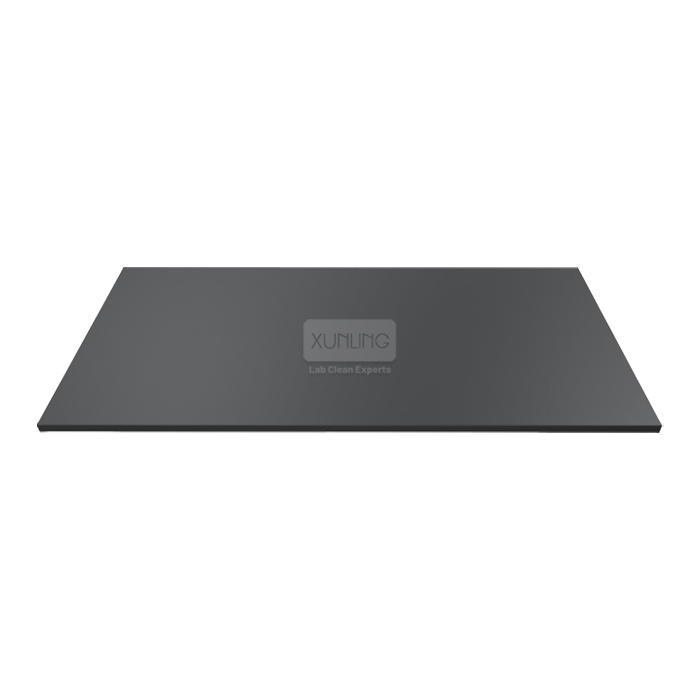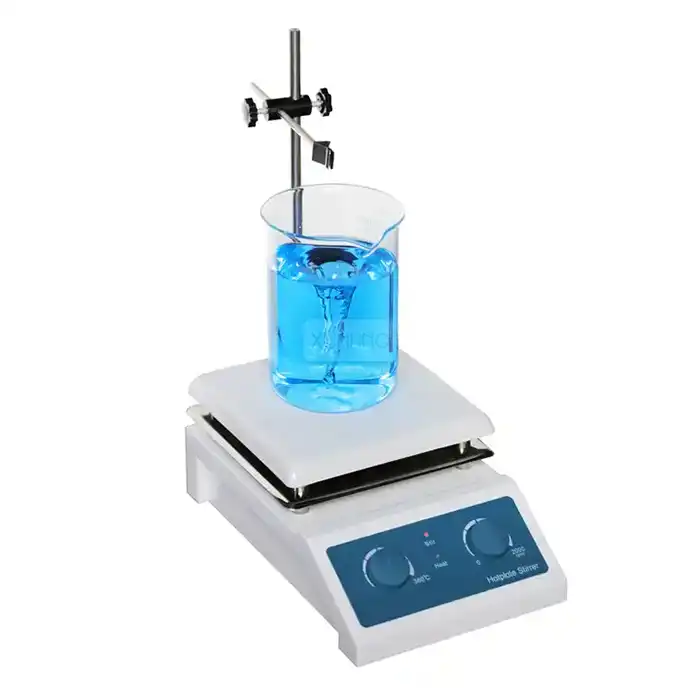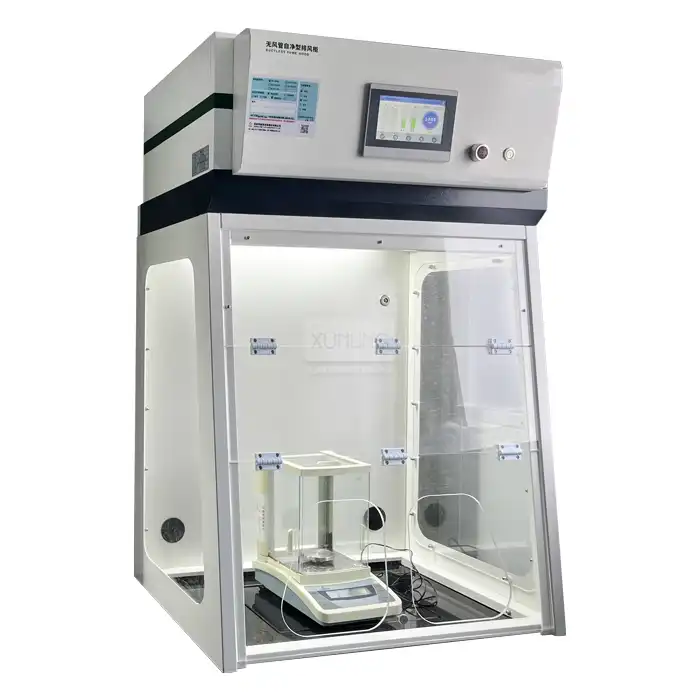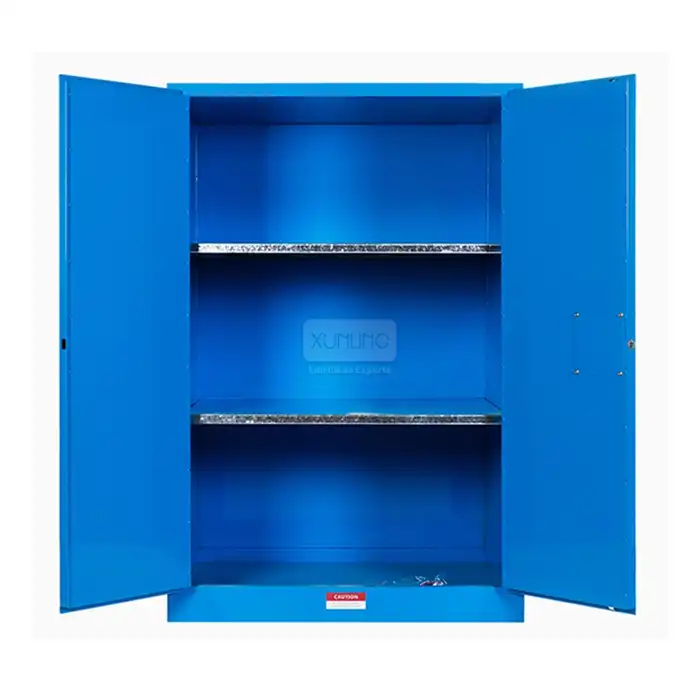
What Are the Key Features of a Self Contained Fume Hood?
2025-07-10 15:48:26
Laboratory safety has never been more critical than it is today, with researchers and technicians handling increasingly complex chemical compounds and volatile substances. Understanding the key features of a Self Contained Fume Hood is essential for any laboratory manager, engineer, or safety officer looking to create a secure working environment. A self contained fume hood represents a revolutionary approach to laboratory ventilation, offering integrated filtration systems that eliminate the need for external ductwork while providing superior protection against hazardous fumes, vapors, and particulates. Unlike traditional ducted systems, these innovative units capture, filter, and recirculate clean air back into the laboratory space, making them an ideal solution for facilities where conventional exhaust systems are impractical or cost-prohibitive.

Advanced Filtration Technology and Safety Systems
Multi-Stage Filtration Architecture
The cornerstone of any high-performance self contained fume hood lies in its sophisticated multi-stage filtration system, which typically incorporates pre-filters, HEPA filters, and activated carbon filters working in seamless coordination. This comprehensive filtration architecture ensures that a wide spectrum of contaminants, including acid fumes, alkali fumes, organic solvent vapors, ammonia, formaldehyde, powders, and micron particulates, are effectively captured and neutralized before air recirculation. The pre-filter stage serves as the first line of defense, capturing larger particles and extending the lifespan of downstream filtration components, while the HEPA filtration stage removes 99.97% of particles measuring 0.3 microns or larger. The activated carbon filter stage provides chemical absorption capabilities, neutralizing volatile organic compounds and odorous substances that could pose health risks to laboratory personnel. Modern self contained fume hood systems often feature filter monitoring capabilities that provide real-time status updates on filter saturation levels, ensuring optimal performance and timely maintenance scheduling.
Real-Time Monitoring and Safety Features
Contemporary self contained fume hood units incorporate advanced monitoring systems that continuously assess airflow velocity, filter performance, and overall system integrity through sophisticated LCD display interfaces. These intelligent control systems maintain optimal airflow velocities typically ranging from 0.3 to 0.7 meters per second, with adjustable settings to accommodate different experimental requirements and safety protocols. The monitoring capabilities extend beyond basic airflow measurement to include real-time alarming functions that alert users to any deviations from safe operating parameters, such as filter saturation, fan malfunction, or compromised containment integrity. LED lighting systems integrated into the self contained fume hood provide optimal illumination for detailed laboratory work while maintaining energy efficiency and reducing heat generation within the work chamber. These safety features work collectively to create a comprehensive protection system that safeguards both personnel and experimental integrity while maintaining compliance with international safety standards including CE, ISO, NFPA, EN 14175, and ASHRAE 110 certifications.
Enhanced Containment and Personnel Protection
The containment capabilities of a self contained fume hood are engineered to provide superior protection against exposure to hazardous substances through carefully designed airflow patterns and physical barriers. The work chamber design incorporates optimized dimensions and airflow distribution systems that create negative pressure zones, effectively containing hazardous vapors and preventing their escape into the laboratory environment. Models such as the XL-DSS800, XL-DSS1000, XL-DMS1275, XL-DMS1600, and XL-DLS1600 offer various internal dimensions ranging from 781×574×934mm to 1581×744×934mm, accommodating different experimental setups and equipment configurations. The sash systems integrated into these self contained fume hood units provide an additional physical barrier while maintaining visibility and accessibility for laboratory operations. Advanced baffle systems within the work chamber ensure uniform airflow distribution, eliminating dead zones where contaminants might accumulate and compromise safety protocols.
Operational Excellence and User-Friendly Design
Installation Simplicity and Mobility
One of the most significant advantages of a self contained fume hood is its independence from complex ductwork infrastructure, which dramatically simplifies installation procedures and reduces associated costs. Traditional Ducted Fume Hoods require extensive planning, structural modifications, and ongoing maintenance of exhaust systems, whereas a self contained fume hood can be positioned and operational within hours of delivery. This installation simplicity extends to facility modifications and laboratory relocations, where these units can be easily repositioned to accommodate changing laboratory layouts or equipment configurations. The availability of both floor-standing models with base cupboards and benchtop configurations provides flexibility in laboratory design, allowing facilities to optimize space utilization while maintaining safety standards. Models like the XL-DSB800, XL-DSB1000, XL-DMB1275, XL-DMB1600, and XL-DLB1600 benchtop variants offer external dimensions ranging from 800×620×1245mm to 1600×790×1245mm, providing options for various workspace configurations and storage requirements.
Quiet Operation and Laboratory Environment
Modern self contained fume hood systems are engineered to operate at noise levels below 52 decibels, ensuring minimal disruption to laboratory activities and maintaining a conducive working environment for researchers and technicians. This quiet operation capability is achieved through advanced fan technology, sound dampening materials, and optimized airflow pathways that reduce turbulence and mechanical noise generation. The reduced noise profile of a self contained fume hood is particularly beneficial in educational laboratories, research facilities, and quality control environments where concentration and communication are essential for effective operations. The integration of variable speed controls allows users to adjust airflow rates based on specific experimental requirements, further optimizing noise levels while maintaining adequate protection. This operational flexibility ensures that the self contained fume hood can adapt to different types of laboratory work, from routine analytical procedures to complex research protocols requiring varying levels of containment.
Energy Efficiency and Sustainability
The energy efficiency characteristics of a self contained fume hood represent a significant advancement over traditional ducted systems, which continuously exhaust conditioned laboratory air and require substantial energy input for replacement air heating or cooling. By recirculating filtered air back into the laboratory space, these units reduce HVAC loads and contribute to overall facility energy conservation. The LED lighting systems integrated into self contained fume hood units consume significantly less energy than traditional fluorescent or incandescent alternatives while providing superior illumination quality and longevity. Advanced control systems optimize fan operation based on actual usage patterns and contamination levels, automatically adjusting airflow rates to maintain safety while minimizing energy consumption. This intelligent operation not only reduces operating costs but also supports sustainability initiatives and environmental responsibility goals that are increasingly important in modern laboratory operations.

Versatility and Application-Specific Solutions
Multi-Industry Laboratory Applications
The versatility of a self contained fume hood makes it suitable for an extensive range of laboratory applications across diverse industries, from pharmaceutical research and chemical analysis to educational institutions and industrial quality control facilities. In pharmaceutical research environments, these units provide essential protection when handling active pharmaceutical ingredients, intermediate compounds, and formulation materials that could pose health risks through inhalation or skin contact. Chemical research and development laboratories benefit from the ability of a self contained fume hood to safely contain volatile organic compounds, corrosive vapors, and reactive substances during synthesis, analysis, and purification procedures. Educational laboratories utilize these systems to create safe learning environments where students can gain hands-on experience with chemical procedures while maintaining appropriate safety standards. Industrial hygiene monitoring applications rely on self contained fume hood systems for sampling and analyzing airborne contaminants, environmental pollutants, and workplace exposure assessments.
Customization and Scalability Options
Xi'an Xunling Electronic Technology Co., Ltd. recognizes that laboratory requirements vary significantly across different applications and facility configurations, leading to comprehensive customization options for self contained fume hood systems. The modular design approach allows for modifications in work chamber dimensions, filtration configurations, control systems, and accessory integration to meet specific experimental requirements or regulatory compliance needs. Custom filtration packages can be developed to address unique chemical challenges, such as specialized sorbent materials for specific contaminants or enhanced capacity filters for high-volume applications. The scalability of self contained fume hood systems enables laboratories to start with basic configurations and upgrade capabilities as research needs evolve or safety requirements become more stringent. This flexibility is particularly valuable for growing research facilities, contract laboratories, or organizations transitioning from traditional ducted systems to more versatile containment solutions.
Integration with Laboratory Infrastructure
Modern self contained fume hood systems are designed to integrate seamlessly with existing laboratory infrastructure, including electrical systems, data networks, and facility management platforms. The LCD display interfaces can be configured to communicate with building management systems, providing centralized monitoring of multiple units and enabling predictive maintenance scheduling based on actual usage patterns and filter performance data. Gas and electrical service integration allows the self contained fume hood to support specialized equipment such as analytical instruments, heating devices, or specialized lighting systems required for specific applications. The availability of various work surface materials and chemical-resistant coatings ensures compatibility with different types of experimental procedures and chemical exposures. Storage options integrated into floor-standing models provide convenient access to frequently used supplies, reagents, and personal protective equipment while maintaining organized and efficient laboratory operations.
Conclusion
The key features of a self contained fume hood represent a comprehensive approach to laboratory safety, combining advanced filtration technology, user-friendly operation, and remarkable versatility to create an optimal working environment for diverse laboratory applications. From sophisticated multi-stage filtration systems that effectively capture and neutralize hazardous contaminants to intelligent monitoring capabilities that ensure consistent performance, these units provide superior protection while maintaining operational efficiency. The installation simplicity, quiet operation, and energy efficiency characteristics make self contained fume hood systems an ideal choice for modern laboratories seeking to balance safety requirements with practical operational considerations and sustainability goals. Ready to transform your laboratory's safety standards and operational efficiency? Xi'an Xunling Electronic Technology Co., Ltd. stands ready to provide you with cutting-edge self contained fume hood solutions tailored to your specific requirements. With our 5-day delivery guarantee, 5-year warranty coverage, custom-made options, and comprehensive one-stop service, we make it easy to upgrade your laboratory infrastructure. Our OEM support capabilities, fast delivery systems, and reliable packaging ensure that your investment is protected from order placement to final installation. Don't compromise on laboratory safety or settle for outdated ventilation solutions. Contact our expert team today at xalabfurniture@163.com to discuss your self contained fume hood requirements and discover how our innovative solutions can enhance your laboratory's safety, efficiency, and research capabilities. Your laboratory's success and your team's safety are our top priorities – let us help you achieve both with confidence.
References
1. American Society of Heating, Refrigerating and Air-Conditioning Engineers. Laboratory Design Guide: HVAC Systems for Laboratories. ASHRAE Technical Committee 9.10. 2019.
2. National Institute for Occupational Safety and Health. Criteria for a Recommended Standard: Occupational Exposure to Laboratory Chemicals. DHHS Publication No. 2020-106. Cincinnati: NIOSH Publications, 2020.
3. European Committee for Standardization. Chemical Fume Cupboards - Part 3: Type Test Methods. EN 14175-3:2019. Brussels: CEN Publications, 2019.
4. Laboratory Equipment Manufacturers Association. Guidelines for Laboratory Ventilation Systems and Fume Hood Performance. LEMA Technical Bulletin TB-2021-04. 2021.
5. International Organization for Standardization. Laboratory Medicine - Requirements for Quality and Competence - Part 15: Requirements for the Examination of Specimens in Point-of-Care Testing. ISO 22870:2016. Geneva: ISO Publications, 2016.
6. Scientific Equipment and Furniture Association. Best Practices for Self-Contained Laboratory Ventilation Systems. SEFA Technical Guideline TG-2020-08. Hilton Head: SEFA Publications, 2020.
YOU MAY LIKE







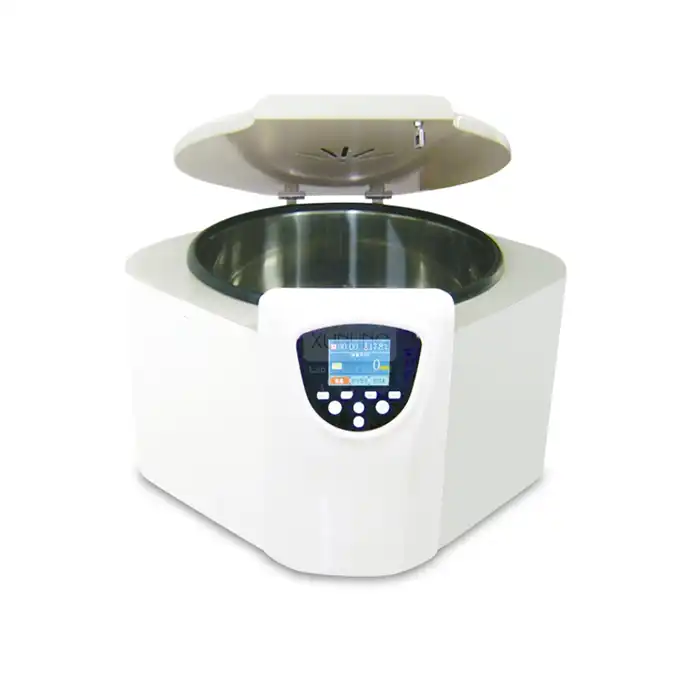
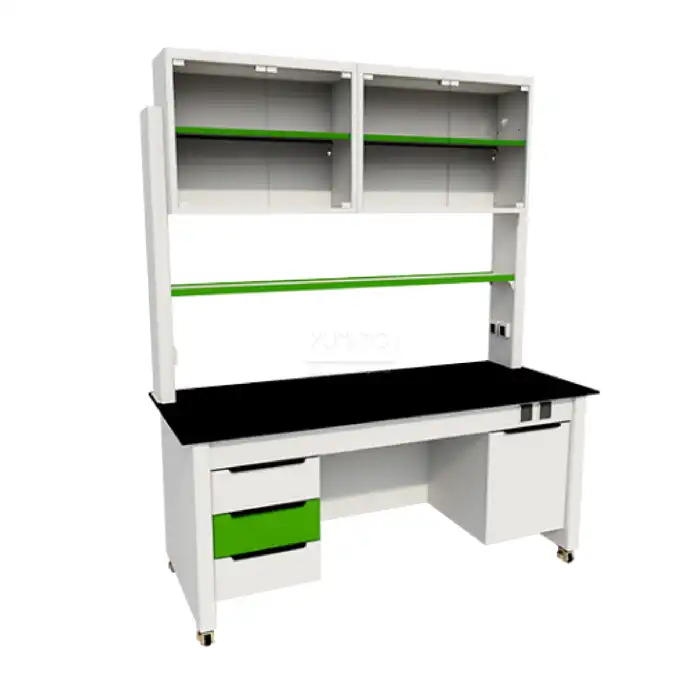
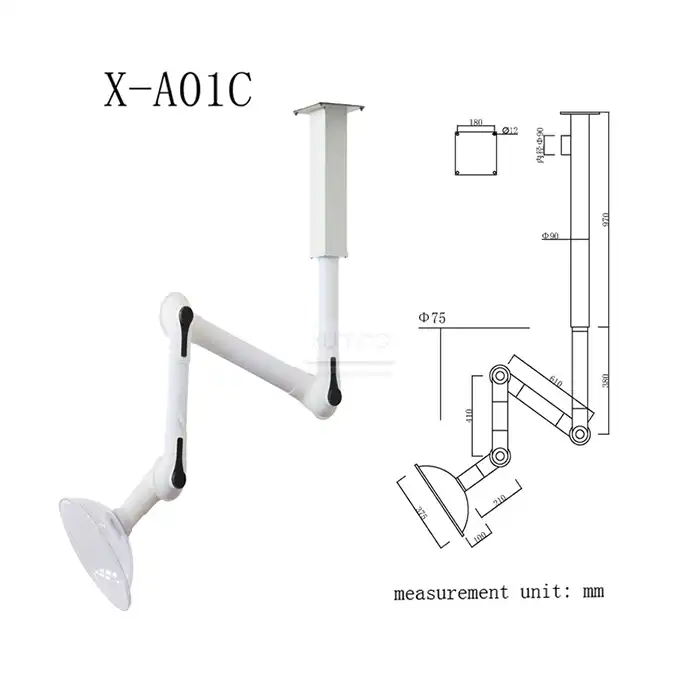
_1735392842145.webp)
